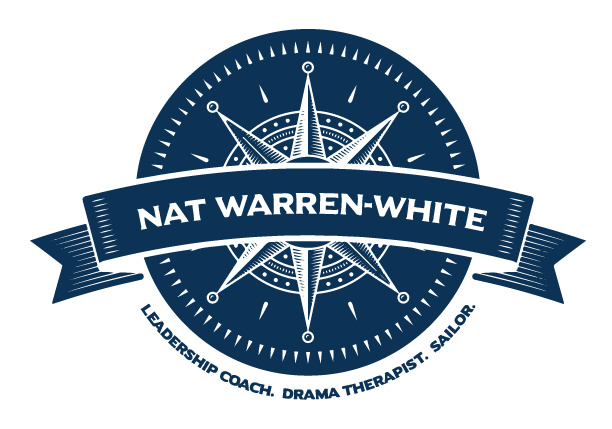
By Nat Warren-White
Originally published in Engineers Australia, August 2014
My father was an engineer who became the CEO of a small utility company based in the State of Maine just across the Canadian border in the US. He grew up in Portland and spent his entire working life at the same firm. When I was 16, he and my mother took our family on a ‘grand tour’ of Europe. What interested Dad the most, as we moved from the UK across the Continent, was the varied designs of the water towers he discovered en route.
Dad was a great one-on-one communicator who struggled with standing-up in front of large groups, a task he feared but had to face often, particularly towards the end of his career when he was called upon to address stockholders, regulators, and civic groups who appreciated and respected his honest and authentic approach to delivering important messages. He was a man of integrity and he believed strongly that the “facts speak for themselves”.
When I was in my early 30s and a new dad myself, I went to my father for advice and support while struggling with the dilemma of how to pursue the work I loved most in life, acting, and still remain gainfully employed – an actor’s existence is often feast or famine! Dad looked at me square in the eye and said: “Natty, you can do something many people, including me, find very difficult, even painful! You can get up in front of people and perform, moving them with your words. That’s a skill I wish I’d learned early in life. It would have saved me a lot of trouble. Maybe you can teach others to do what you do.”
While continuing to pursue an acting career, I went on to teach acting at several Boston universities and conservatories and eventually was drawn into the world of executive coaching which led to my 20+ year relationship with the Ariel Group. Perhaps most rewarding was the chance to coach my dad as well. Unfortunately, that opportunity didn’t present itself until after he’d officially retired. Still, helping him tap into the true power of his ‘leadership presence’ allowed us to connect in a way that neither of us imagined was previously possible. He understood the world of acting about as much as I did engineering. The coaching process helped us both appreciate what had seemed so foreign for most of our lives together. For this I am deeply grateful.
What my father, the engineer, inherently understood in his bones is that we communicate most effectively when we speak from the heart. It is through the heart that we are best able to reach people’s minds. At the Ariel Group, we have arrived at a working definition for ‘presence’: “Leadership presence is the ability to authentically connect with the hearts and minds of others [through the use of physical, vocal, emotional, and intellectual expression], in order to move/motivate them toward a desired outcome.”
In our work coaching leaders at Ariel, we focus on helping people who have learned to rely predominantly on numerical data and graphs find the right stories and metaphors to help paint vivid pictures making their messages land more powerfully. Our goal is to actively support leaders from all sectors as they work to access and develop their expressive natures.
My first executive coaching client was the engineer/founder and sole owner of a small software firm based in Boston. When I met him, his company had just been purchased by a much larger conglomerate and he was in the process of making a major shift in his role from solo leader, used to calling his own shots, to one who was suddenly responsible to a much larger group of shareholders, board members and regulators, not to mention his own management team and direct reports. He was desperately struggling to find his footing and the resulting ‘fight or flight’ response he experienced caused him to panic in front of the audiences he was required to face. We worked together for many months and he discovered the power of diaphragmatic breathing and positive mental imaging among other tricks of the trade.
These acting techniques definitely helped him relax and get things better under control, but the real key to success came one day when I was visiting him in his home office and noticed a framed photo hanging on the wall behind his desk. I asked him about it and his face immediately broke into a winning and relaxed smile as he described his passion for ‘gentleman farming’ and particularly for the mysterious world of beekeeping. The photo showed him wearing the complete apiarist’s outfit and carrying a smoker. He looked both excited and at ease. The more we talked about bees, and the science and art of caring for them, the more his passion showed through and the more expressive and comfortable his presence became.
In the end, I urged him to carry a jar of his sweet honey, produced by his prize bees, into his next presentation in front of an intimidating audience. He practised using the honey as a metaphor for the work his software company was producing. When he spoke from this personally passionate place he relaxed and came alive in a way I, nor anyone else, had witnessed before. Suddenly, his coveted data took a back seat to this powerful creative metaphor. His nervous fight or flight symptoms also abated and he instantly became a more present, effective and inspiring speaker. By tapping into his own passionate life story he emerged as the true leader he had always harboured inwardly but struggled to project outwardly.
This story reinforces a couple of clear lessons I’ve learned during my nearly 25 coaching years:
- Trust that the people we are coaching have what they need in their own life experience to support their leadership presence with consistency and impact. We are all born expressive; years of formal education beat it out of us (unless we train to be an actor!).
- Tap into the natural intuitive abilities we all share, but have forgotten or abandoned. They’ve been overpowered by our predominately left-brained educational prowess. With a little practice we can re-access a level of creativity and communication acumen that we have either forgotten or never before realised.
- Learn to use stories and metaphors to frame important messages in order to help them land more effectively with any audience. This process requires a decisive mind-shift and a bit of consistent practice in order to become facile with this age-old form of interpersonal communication. This is what actors are doing all the time. Engineers can learn to do it too!
At Ariel we coach leaders using a four-fold approach called the PRES Model:
- The first step in the model asks: What does it take for you to be fully “Present”, in the moment, connecting honestly and openly with both yourself and closest to you?
- The second step asks: what can you do to present more powerfully? Reach out and connect with others using empathy, stories, metaphors, anecdotal evidence, and, yes data, that is relevant and appealing to your audience.
- The third step asks: how you can be more “expressive” using your body, voice, and the space surrounding you to effectively get your message across so that it excites, amuses, moves, intrigues, and inspires your audience.
- The fourth step asks: how “self-knowing” you are. How aware are you of how your presence impacts others and what can you do to adjust/modify it to achieve the strategic outcomes you are aiming for?
Together the four PRES components combine to create 100% of your Leadership Presence. The big question is, are you using them all to their greatest potential? What can you do today to bring more of yourself to the crucial leadership challenges you face and have lasting positive influence on the people you are leading? This is the challenge all leaders must face including those who come from an engineering, background.
What can you do now to tap into a more right-brained, creative approach to your leadership communication style? You do not have to change who you are at your core. Just as my father, John White PE [Canada], was able to develop his presence to support the roles he stepped into late in life, you can too. Contrary to the commonly accepted belief, you can teach old dogs new tricks, even old engineering dogs!
